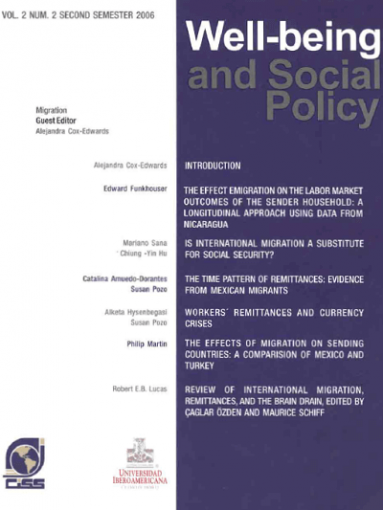
We explore the time pattern of remittances using data on return migrants from the Mexican Migration Project. Some of these return migrants have settled in the U.S. and are returning to Mexico to visit family and friends, whereas others are temporary migrants returning home after a working spell in the U.S. We find that the dollar amount remitted first increases with time spent in the U.S. to later on decline after five and a half years of U.S. experience, lending support to the existence of an inverted “U” time pattern in migrant remittances. Furthermore, as expected, remittance decay occurs at a faster rate for migrants maintaining weaker ties to Mexico and up to three years later for their counterparts with spouses back in their origin communities.
